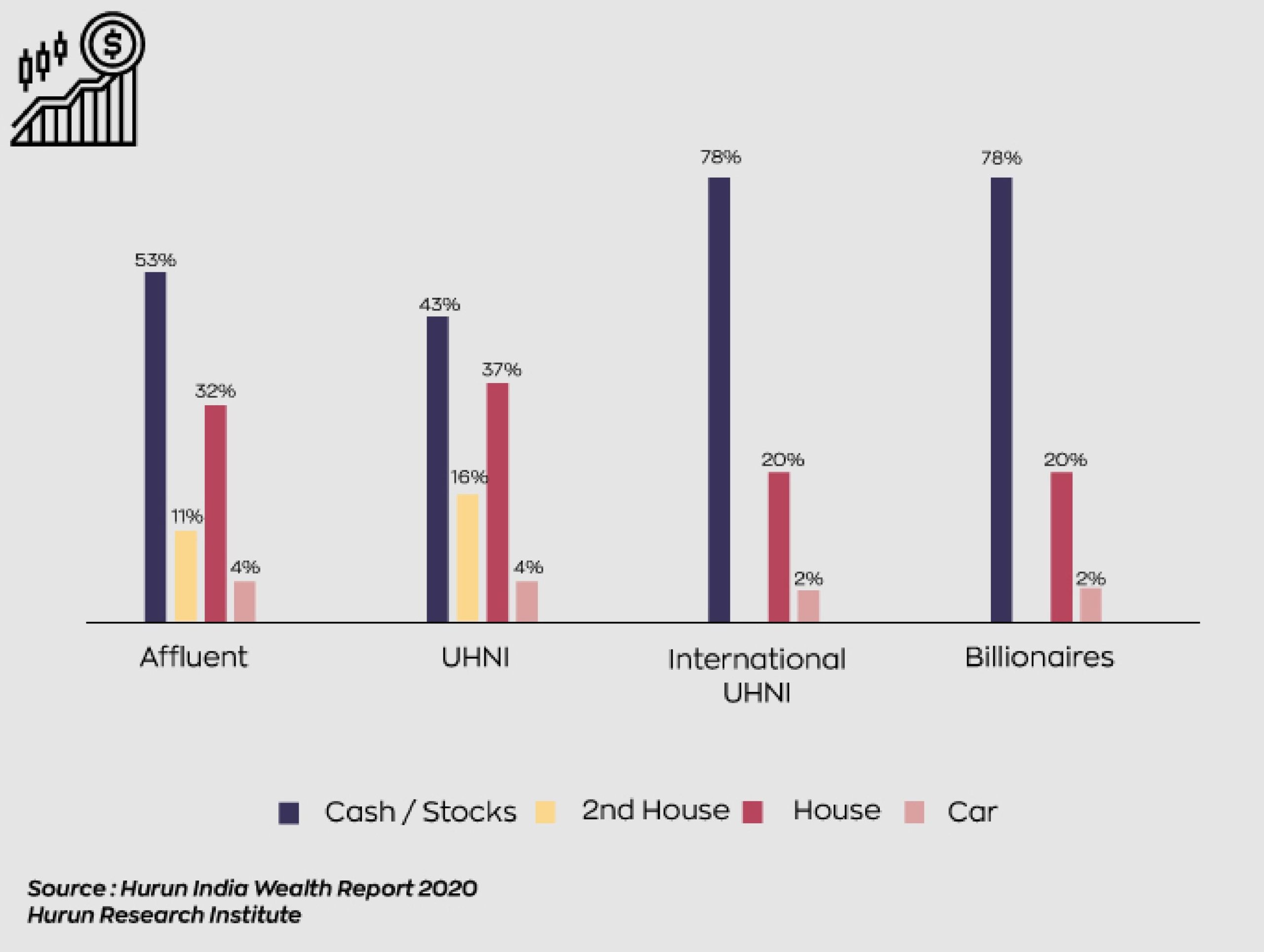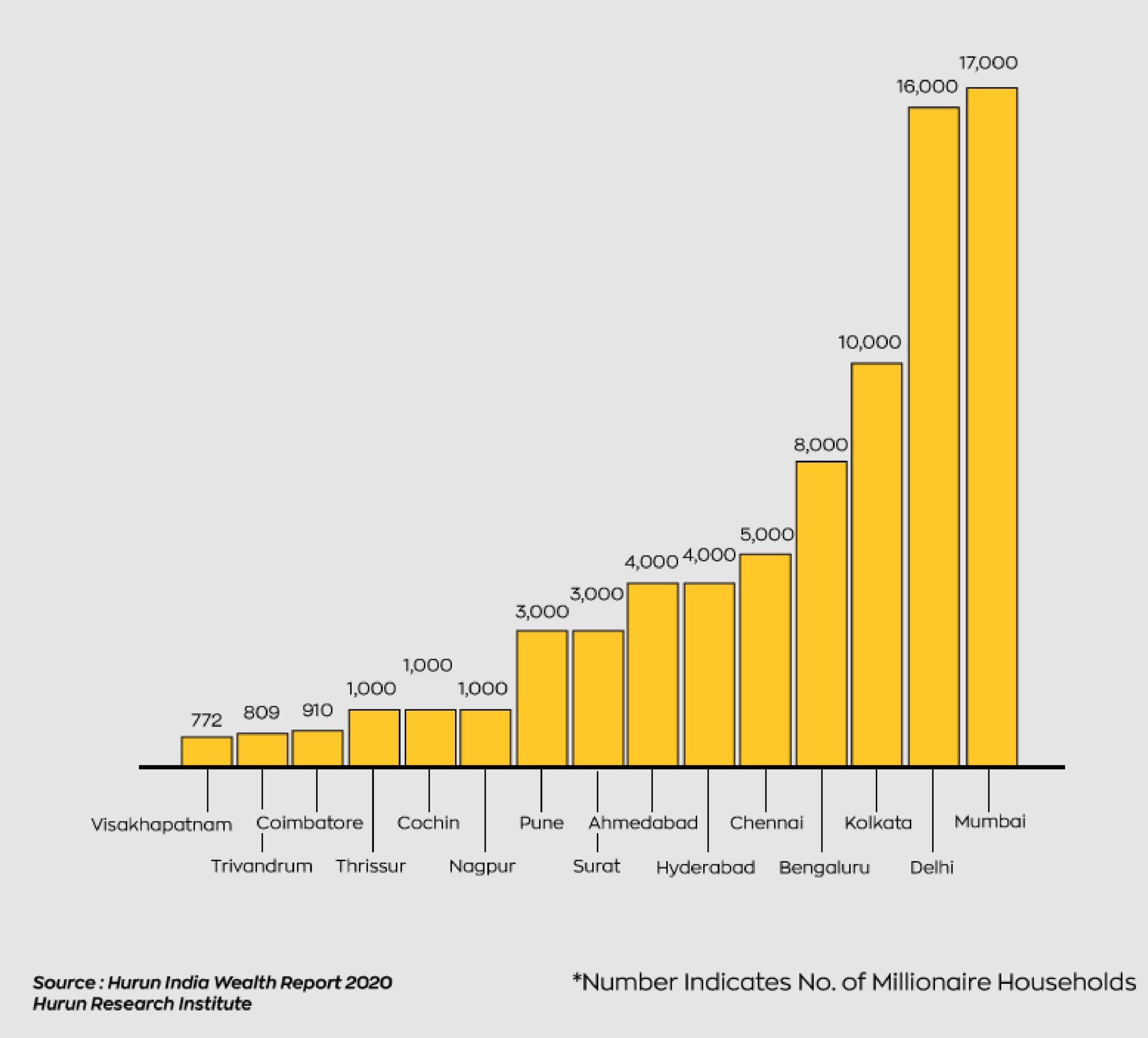On Tuesday, Hurun India released a Wealth Report 2020 describing the distribution of wealth across Indian households. This report has identified a novel household category in India – the ‘New Middle Class’. The report defines the “ New Middle Class” as those whose earnings are more than INR 50 Lakhs and net worth less than 7 crore rupees. The number of these “New Middle Class” households is estimated to be around six Lakh or 6,33,000 to be precise.
The major chunk of this population hails from Delhi, followed by Punjab, Gujarat and Maharashtra. These households, the report says, have an average savings of twenty lakhs rupees annually. And, their major allocation of savings goes towards physical assets, giving preferences to residential property and automobiles.
Wealth Brackets of the Indian Households
The findings in the Hurun Report says that there are mainly two broad segments of wealthy households in India. The nadir part of the wealth pyramid consists of households having work compensation income, combining with investments in Fixed Deposits, real estate and equity as their primary source of income.
On the other hand, the households topping the wealth pyramid are observed to have inherited wealth, real estate possessions. Business earning and a diversified equity investment portfolio contributing to their main source of income.
Asset Allocation of the Indian Households
Business Owners
This category of the households comprising a billionaire, international ultra-high net worth individual (UHNI), UHNI or an affluent individual, allocate the majority of their wealth towards their primary business activities.
The report says, “The other major consumers of their investable wealth include cash reserves, equity stocks, and primary residence.”
Real Estate Owners
In this second category comes the Real Estate Owners whose main source of generating wealth is through the lands possessed by them. On average, such households allocate 83% of their wealth in buying real estate properties.
Golden Collar/ Salary Driven
Salary driven Millionaires, aka Golden Collars, are categorized under those earning an eight-digit salary annually for at least five years, and preferably feels investment in house, afterwards cash/stocks, as safe.
Stock Market King

These are those households that actively engage in the Stock Market, and earn their primary source of revenue from the bourses.
“Nearly two-thirds of their wealth is devoted to stock market investments. Given the scale of these investments, the upper-level households in this category, i.e. the international multi-millionaire households and above, hire wealth management firms to look after their investment portfolios,” the report put forth.
New Middle Class
This is the novel category identified in the report, stating INR 20 lakh as their average savings. Such households invest primarily in residential property and automobiles.
The report identifies the category of Middle-Class Households in India but does not shed light on their behaviour on investments. At present, approximately, sixty lakh of households fall under this category; having the earning of more than ₹ 2.5 lakh and less than 7 crores.
Following top ten states are the home to 70.3% of the millionaire Indian households –
In geographical distribution of the wealth, Maharashtra has the highest number of millionaires (56,000), followed by
- Uttar Pradesh (36,000)
- Tamil Nadu (35,000)
- Karnataka (33,000)
- Gujarat (29,000)
- West Bengal (24,000)
- Rajasthan (21,000)
- Andhra Pradesh (20,00)
- Madhya Pradesh ( 18,000) and Telangana (18,000)
City-Wise Distribution of Millionaire Households
Mumbai (16,933) tops the City-wise chart of Millionaire households, followed by Delhi (16,000), Kolkata (10,000), Bengaluru (7,582) and Chennai (4,685).








